Your Instructor and Values
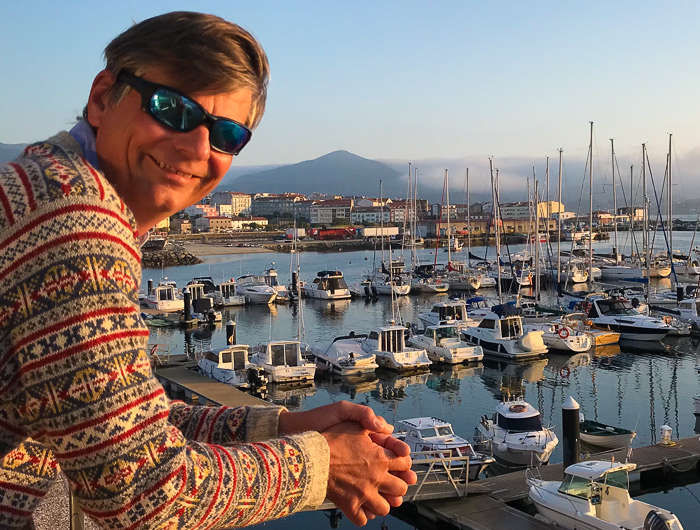

What makes Reginasailing so special and what are the values onboard?
I do this purely out of passion and love for sharing great moments!
Sail and learn with an RYA Yachtmaster Ocean instructor, who really has been out there, sailing, all his life
Students and participants are treated as guests
Guests often retur annually and treat the boat like their own and their crew mates as friend
Itinerary and crews are carefully compiled for optimal composition
No costs are spared to keep Regina Laska in mint condition, sailing in safety, comfort and style
Good food and wine is part of the experience, both onboard and when eating out
In a nutshell why to join: The Reginasailing learning atmosphere

The teaching
The best compliment I can get from participants is when they say:
Learning feels more like a side-effect in an otherwise pleasant, friendly atmosphere among friends
I believe participants should feel more inspired than taught. I wish my guests to experience being encouraged rather than trained and coached instead of instructed.
For me, this is a very challenging goal! I’ve been working for decades trying to refine the learning experience and teaching methods. How can one best offer the most pleasant and rewarding training environment? It’s a never ending evolution. At least, it’s for me.
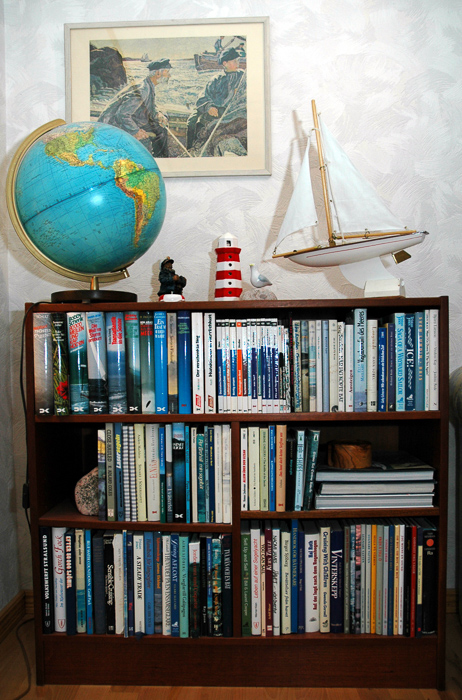
Some of the books I had read before the sabbatical 2005
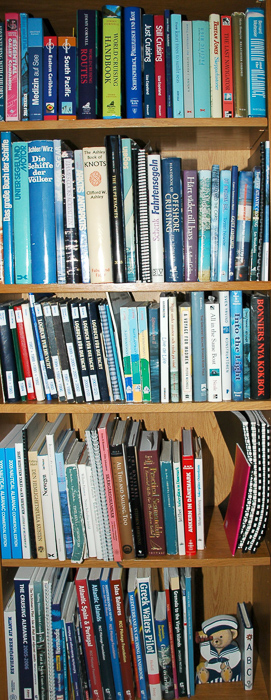
Some more books from my marine shelves in 2005.
Reading books doesn’t really show the complete picture.
Yes, it does give the fundaments, but you need to go out there and be with like-minded sailors who wish to learn and share the experience.
Who would have thought that I myself would write several books on sailing, when there are so many out there already?
Practical and theory training need to go hand-in-hand. And you start with the hands-on practical sailing. The theory then comes naturally! So don’t just read and learn, take courses and certificates. Go sailing, instead! The sea is your best teacher and mistakes are allowed and boats can be repaired!
Once you have familiarized yourself with sailing (preferably with an experienced, friendly, relaxed and understanding skipper), the desire to understand the “hows” and “whys” come naturally and theory classes become so much more rewarding and fun!
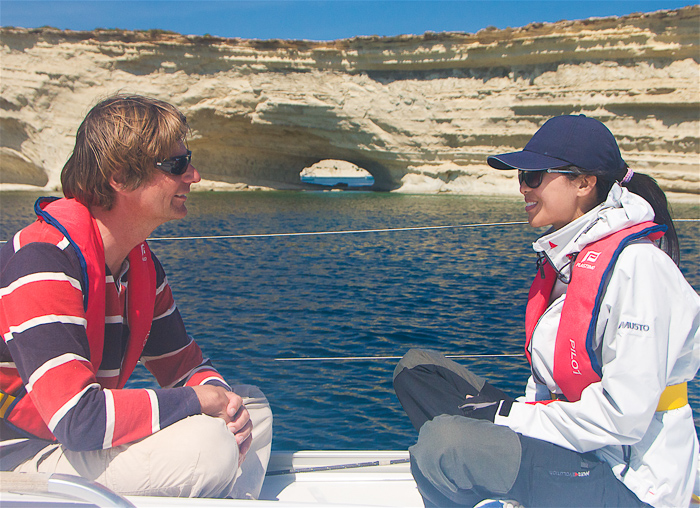
Discussing anchoring technics in Malta during my early days as an RYA Yachtmaster Instructor.
I am regularly being assessed by the RYA on how to best deliver courses. I take part in RYA conferences for instructors and I get regular feedback from previous participants. That’s all well and good, but I think the most rewarding source for myself in order to continue developing as an instructor is the secret weapon to be together with my partner Gaby. Gaby is a psychologist and can easily have empathy with participants and coach me how to best deliver a message. In other words: Your sailing coach and skipper also has a coach, namely a psychologist!
In deep gratitude I would like to thank Gaby and her never ending encouraging criticism as well as patience to coach me on how to continuously become a better instructor. She didn’t know any sailing when we met and most of my teaching mistakes have been done with Gaby.
I’m glad she is still sailing with me and didn’t jump ship when taking her out into the Scottish Hebridean Sea on her maiden voyage. She didn’t give up when I never stopped encouraging her to finally become an RYA Yachtmaster, which she eventually passed in 2017.
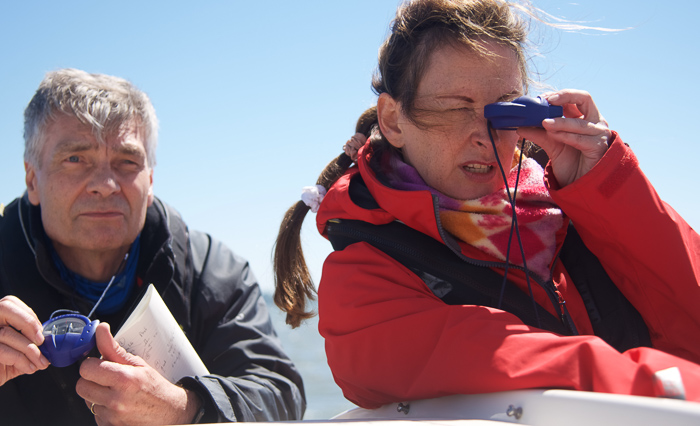
Gaby during her RYA Yachtmaster exam 2017
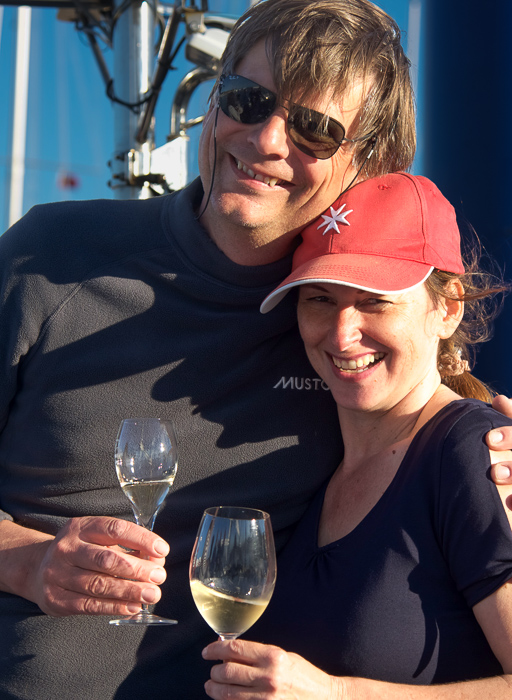
Gaby just having passed her Yachtmaster Exam.
What does this mean, to sail in Safety, Comfort and Style?
Sailing in Safety
Safety is paramount and there are no compromises on keeping the very high standards of an otherwise already quite safe hobby, life-style or sports. My guests put their trust in me personally so it’s my personal responsibility to make sure everything onboard is kept to the highest of standards.
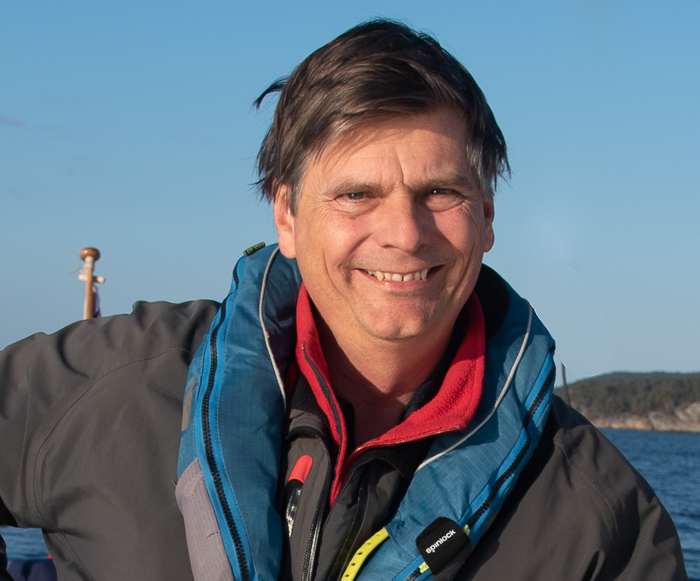
Your Skipper is responsible for the safety on board
There are very few sail training or charter boats that have been commercially coded and approved for Area 1 sailing. In my case, its is the stringent rules of the Maritime Coastguard Agency (MCA) that I follow in order to keep the highest of safety standards. I have described some differences between most charter boats and Reginasailing in the safety philosophy here.
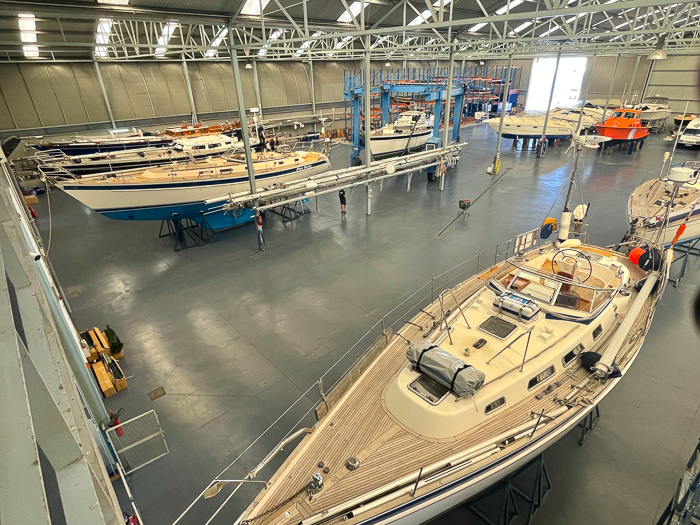
The yard where Regina Laska is undergoing her annual check-ups and refits looks more like a hospital for high-end boats. Marina Coruna is like a Spa for these fine yachts!
How far I go to keep Regina Laska equipped with state-of-the-art and redundant safety systems can be followed on the Regina Laska Story page. But it doesn’t end here! Not only the boat, but also the crew and especially the skipper also needs to fulfil the highest of safety standards.
Training and assessment of your skipper/instructor
It isn’t enough “to be experienced” (but it does help). Most “experienced sailors” have been lucky enough not to have encountered any emergency situation. That’s great, of course, but what if….??! My philosophy is that crew and especially the skipper needs to be trained, assessed and regularly updated on various emergency situations and being training accordingly. These trainings need to take place in a safe simulating environment where you actually go and handle the f*ing mess!
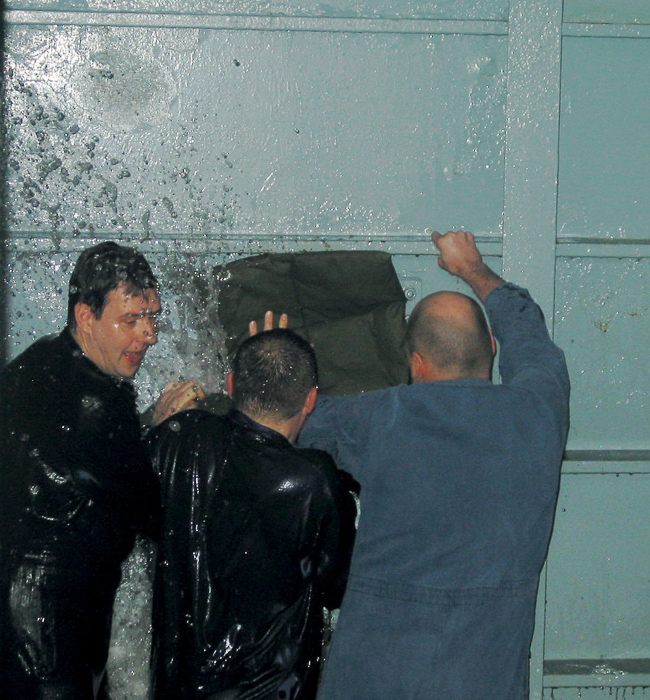
Fighting leaks in a sinking ship during one of my training opportunities.
So, while the boat is undergoing its regular and rigorous annual controls, checks and refits, so is your skipper!
Unlike many other yacht skippers, I treat my job professionally and have chosen to fulfil the qualification standards for masters, officers and watch personnel on seagoing merchant ships.
For instance, every two years, I’m undergoing medical tests under the strict rules of the International Maritime Organisation (IMO) like the professional mariners do. I am following the stringent rules of the International Convention on Standards of Training, Certification and Watchkeeping for Seafarers (STCW). Also my medical training is reaching so much further than a standard “First Aid Course” and the medical kit resembles more to a small hospital onboard, even including an oxygen generator. My qualification “Proficiency in Medical Care” has not only taken two full weeks to do, but has to be re-assessed and trained regularly. My qualification as an RYA Yachtmaster Instructor also has to be re-assessed und updated to the newest safety and teaching standards every 5 years which is a 2-day course on an RYA Training vessel at sea.
I am also an Advanced Open Water Diver and full diving gear is onboard so that any issues under water can be addressed without having to call for a diving company.
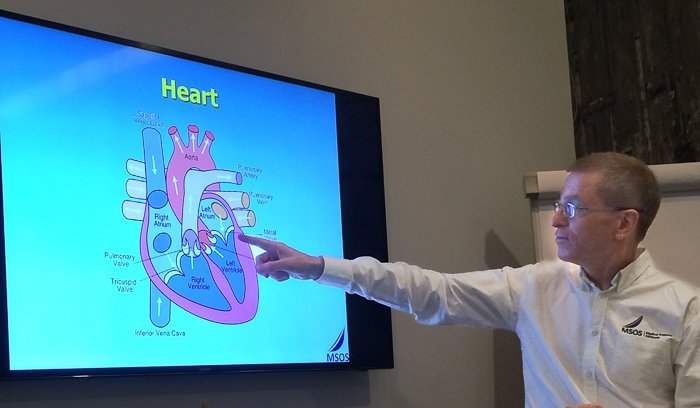
Dr. Spike Briggs was hired by Reginasailing to hold an STCW course for the Regina Laska crew.
Not just your skipper is being trained!
From time to time, the entire Reginasailing family, i.e. regular participants and guests on Regina Laska, are joining me on training opportunities. This way, not only your skipper is being trained but we do it together! This is not only more fun, but enhances the safety onboard. When you join next time on Regina Laska, possibly one of the other crew members have taken part in one or several of the Reginasailing medical trainings, enhancing safety further?
Please get in contact if you are interested in joining me on one of my annual forthcoming training opportunities.
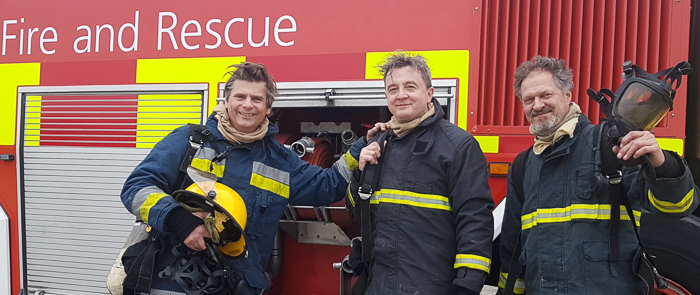
Reginasailing family members joining me on my fire-fighting course
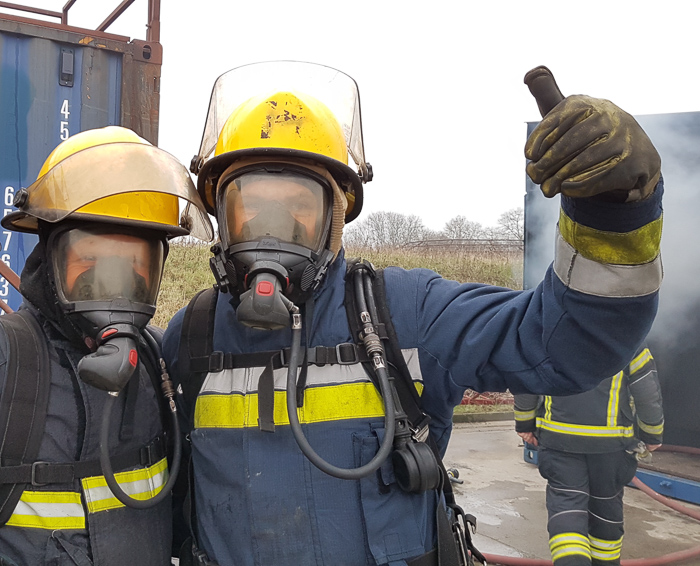
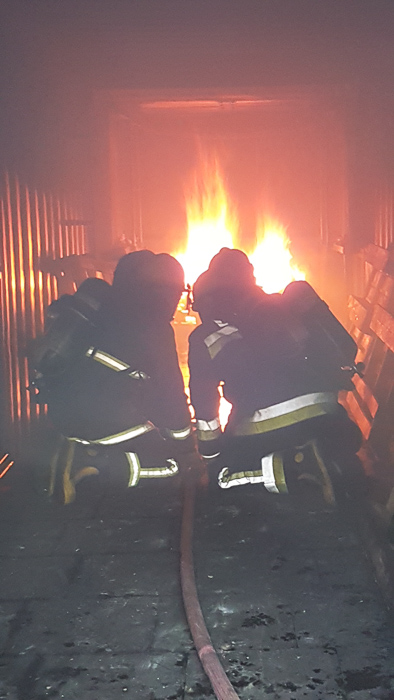
Reginasailing has, for instance, organised a full two weeks training in Southampton in Medical First Aid, Medical Care, Sea Survival and Fire fighting with several members of the Reginasailing family taking part.
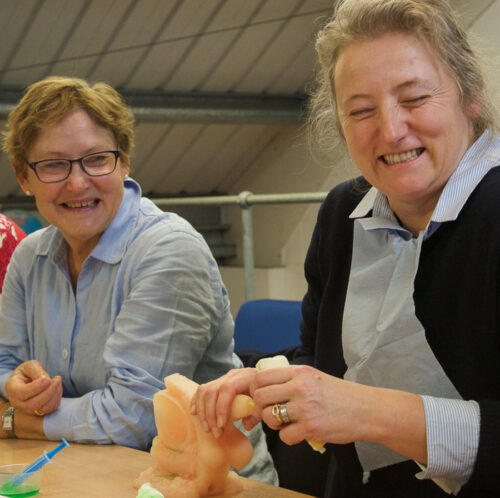
Reginasailing crew joining me on a medical training week, here how to set a catheter.
Further, Reginasailing has organised a World Sailing sea survival course in co-operation with SailPartner in Bremerhaven. See the Reginasailing video here.
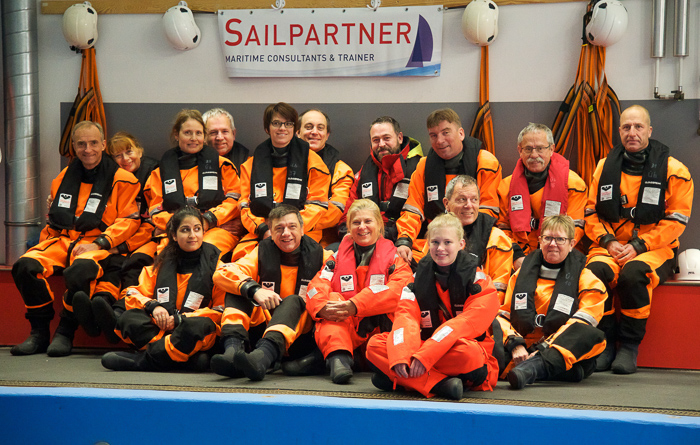
A large group of Reginasailing members taking part on the World Sailing Sea Survival course with Sailpartner.
Four days “Far-From-Help course” took place in the remote mountains of Scotland. Authentic looking medical situations had to be catered for out in the Scottish nature, learning a lot from Wilderness Medical Training. The fewest accidents happen at sea, so therefore medical situations during land excursions need to be addressed even more!
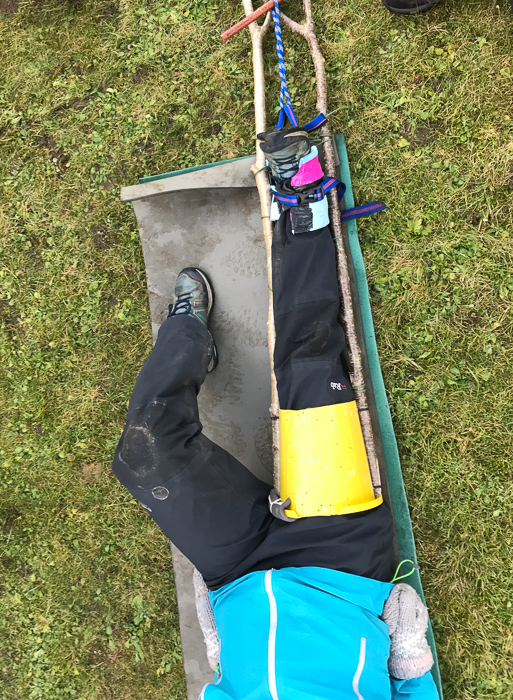
Wilderness Medical Training “Far from Help” in the mountains of Scotland.
A full week of medical training has also been organised for the Reginasailing crew in co-operation with Dr. Spike Briggs and MSOS, the medical responsible for the Volvo Ocean Race, the Oyster Round the World Rally and many privately and commercially owned yachts and ships. Spike is also the author of the new edition of “The Ship Captain’s Medical Guide” which is a compulsory book that every commercial ship needs to carry onboard. The old Medical Guide has been completely and comprehensively rewritten by Spike, reflecting modern best practices. Do you carry one?
If you buy it, don’t forget your 10% Reginasailing discount from bookharbour.com. The Code is: rs-BHAPGG10
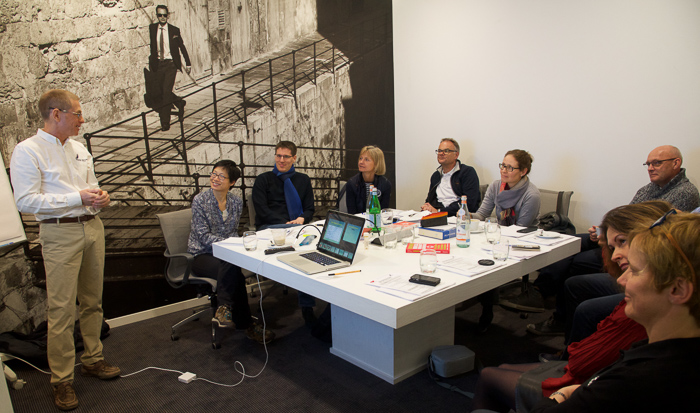
4 days medical training with Dr. Spike Briggs for 9 members of the Reginasailing family.
If you are interested in participating in a safety or medical course together with other crew from Reginasailing, please contact me! I am regularly undergoing training and enjoy doing so together with fellow crew members.
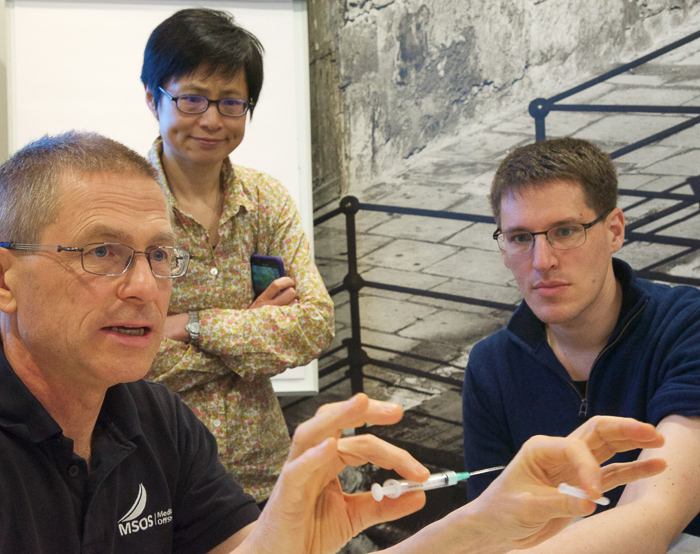
Dr. Spike Briggs explaining how to give an injection to the Reginasailing medical training week in Malta.
Safety routines, measures and management
My operation manual spans over 215 pages where I go through every routine, checklist, safety measures etc onboard. There is a risk analyse and measures to minimise the possibility of an accident, both regarding the boat but especially regarding crew briefing, routines and safety checks.
For quality purpose, I use the new Yacht Management Software by Aquator Marine. This is a software where all details, work, training and crew management are planned and managed so no detail is being forgotten. The software reminds me on work to be done and follow up information what has been done when in which way.
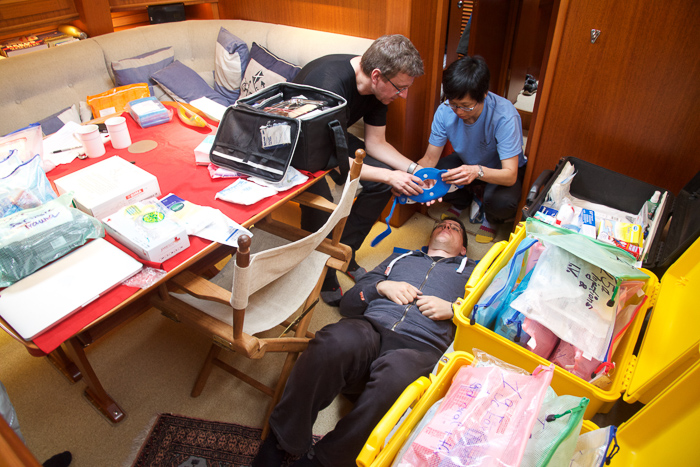
Reginasailing crew onboard Regina Laska checking out on my medical equipment.
Qualifications and certificates
I personally hold the following qualifications and experience. These are regularly being assessed, updated and renewed. The time span between training is stipulated by the rules, but I surpass these regularly and do extra training in between.
- 40+ years and well over 75,000 miles of sailing experience
- 10+ years as an RYA Yachtmaster Ocean Instructor
- Medical Fitness Certificate in compliance with ILO/IMO, Merchant Shipping Directorate
- STCW Personal Safety and Social Responsibilities Certificate
(IMO Regulation IV/1, paragraph 1 and Section A-VI/1, paragraph 2.1. of the STCW Convention and Code as amended) - STCW Fire Prevention and Fire Fighting Certificate
(IMO Regulation IV/1, paragraph 1 and Section A-VI/1, paragraph 2.1. of the STCW Convention and Code as amended) - STCW Survival Techniques Certificate
(IMO Regulation IV/1, paragraph 1 and Section A-VI/1, paragraph 2.1. of the STCW Convention and Code as amended) - STCW Security Awareness Certificate
(IMO Regulation IV/1, paragraph 1 and Section A-VI/1, paragraph 2.1. of the STCW Convention and Code as amended) - Elementary First Aid Certificate
(IMO Regulation IV/1, paragraph 1 and Section A-VI/1, paragraph 2.1. of the STCW Convention and Code as amended) - STCW Certificate of Proficiency in Medical First Aid Certificate
(Regulation VI/4, paragraph 1 and Section A-VI/4, paragraphs 1 -3 of the STCW Convention and Code as amended) - STCW Certificate of Proficiency in Medical Care Certificate
(Regulation VI/4, paragraph 1 and Section A-VI/4, paragraphs 1 -3 of the STCW Convention and Code as amended) - WMT Wilderness Medical Training
(4-days course complying “Far from Help” and “Advanced Medicine” for medical treatment in the wilderness) - Level 2 Food Hygiene and Safety Catering
(fulfilling the MGN 477 Maritime Labour Convention and endorsed by the Institute of Hospitality ) - Advanced open water diver
with full diving gear onboard
Sailing in Comfort
Being in the nature or on a sailing boat does not necessarily mean any major sacrifice on comfort. It’s just a bit different. Let me explain how I try to feel good and comfortable while sailing and living onboard.
Clothes
Comfort at home can be sitting in a cozy cotton softy-dress. Not so on a boat. In order to feel dry and warm on a boat, you need different materials in the clothes. The functional clothes I love are from Swedish SailRacing who are opting for the best sailing clothes with no compromise, no matter the outer climate around you.
My friends should get a 10% discount when ordering clothes from SailRacing. The discount code is “reginasailing”. If it doesn’t work (any more), let me know!
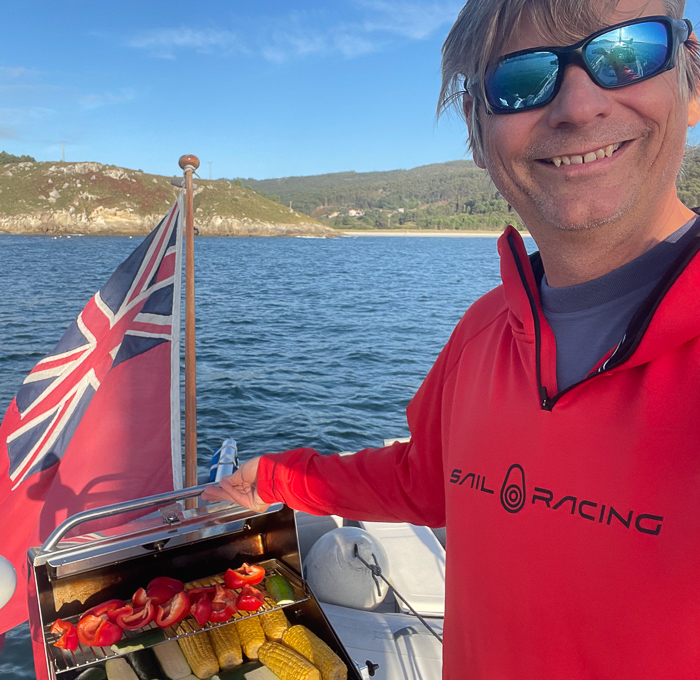
SailRacing make great clothes. Here i wear my windproof sweater which doesn’t attract the slightest of moisture, keeps warm, is wind-proof and yet, is so light I hardly feel it!
Besides being barefoot, which is my absolute favourite when it comes to comfort, I really like the stylish functional shoes from Irish Dubarry. It they work in rainy Ireland, they will work anywhere! If you don’t want to bring boots, look at watertight socks from SealSkinz you wear in your normal shoes. The shoes get wet, but your feet stay dry!
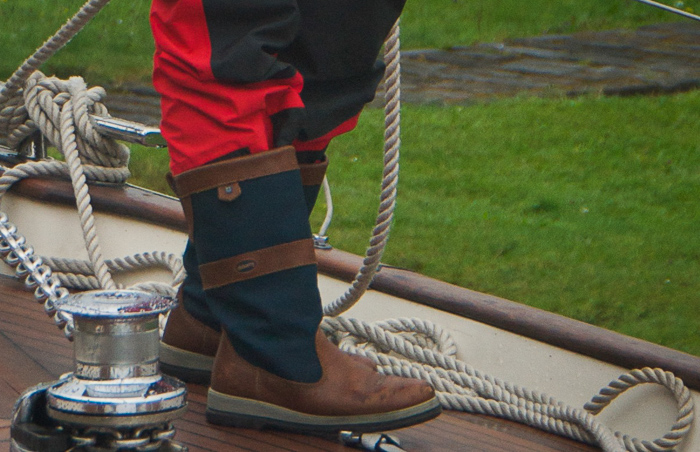
Cotton should be avoided altogether, since they are absorbing far too much moisture and always feel damp on a boat.
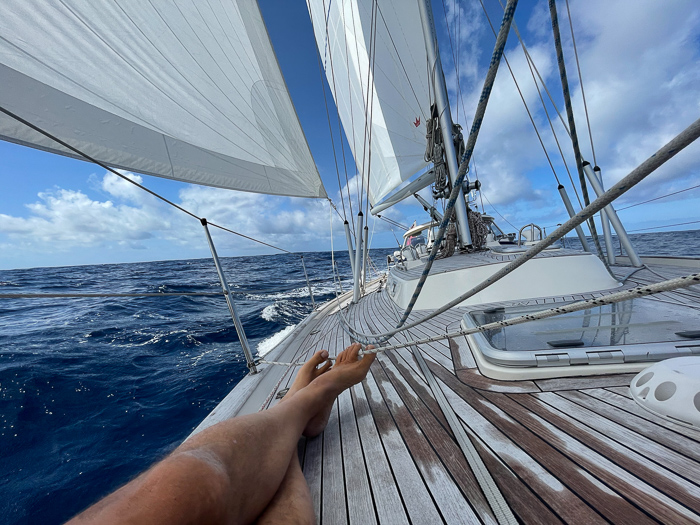
My favourite shoes!
Seasickness
Seasickness is a major factor for discomfort while sailing, to say the least! Since I sail for 6 months a year, I am in the lucky position to getting used to the movements of the boat bit by bit. My poor guests, on the other hand, arrive one day and off we go the next! Therefore, I always try to start easily on each leg, first doing some short legs in sheltered waters, before heading offshore.
I encourage my guests to talk to their doctors before coming in order to get a prescription for the very successful Skopodern plaster. One rare side-effect is that it does possibly take down your heart rate and/or your blood pressure, so that’s why you need to see your GP first. Good to know: this medicine has been around for some 50 years and helped countless seamen (and cancer patients who suffer from nausea during their chemo therapy, which is what this drug really has been developed for). Wearing your patch behind your ear has become synonym of sailing in comfort.
Read more about how to avoid and handle seasickness here.
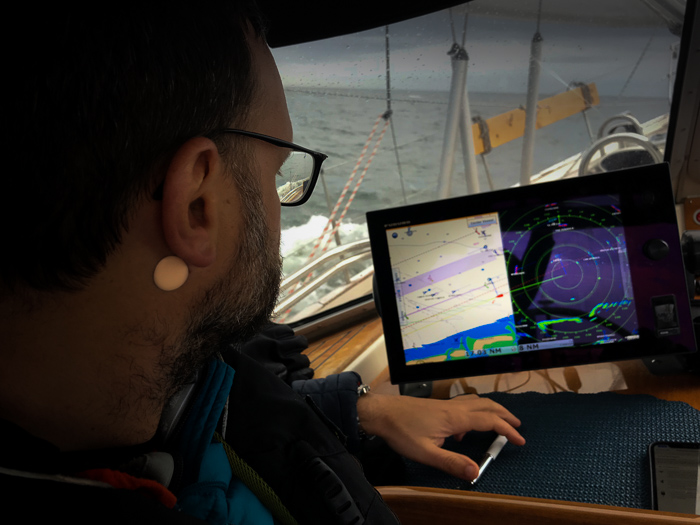
Wearing the patch behind the ear prevents seasickness to a very great extent.
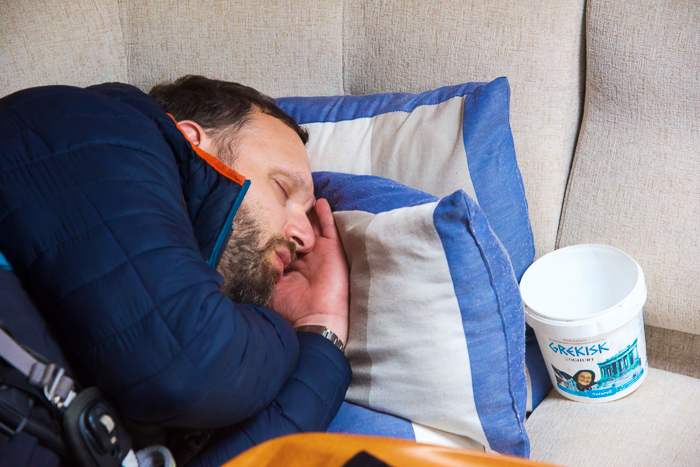
And if nothing else helps: “Papa Grecco” the old yoghourt container is a good alternative to a teddy bear when going to sleep…
Anxiety
No crew member should ever feel any anxiety or discomfort due to anything worrying. We talk through any questions you might have about safety, the destination or the expected weather. All crew members are feeling engaged to influence the sailing leg. I always try to cater for the weakest crew-member and explain that feeling anxious is not a bad thing at all! It normally gives a signal that not everything is felt to be understood to a satisfying degree.
Therefore, we communicate anxiety very openly onboard Regina Laska (just as we openly talk and admit to seasickness). Since what for one crew member might feel like a daunting situation, for the other crew member it’s nothing but a little discomfort, knowing we will neither capsize, sink or die.
Therefore, crew members are not allocated on a first-come-first-serve basis, but according to the various expectations. By now, I know my returning guests pretty well and get a feeling for who might appreciate to sail with whom under which circumstance. For new participants, however, I prefer to talk to them on the phone or get to know them before allocating them with other crew members. This, so the expectations are similar and nobody needs to feel as the last in line.
If you don’t feel you have the situation under control, we’ll talk about the possible reasons and then possibly hand over the rudder, which gives a great sense of having the boat under control. And besides: it’s really great fun to steer the boat in big waves!
And the only way to believe that last sentence is to try it out for yourself!
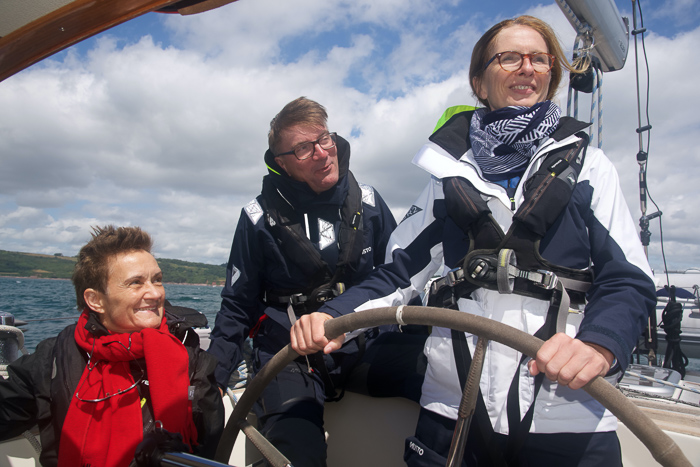
Taking the helm when feeling insecure under the support and cheer of the loving, caring and encouraging other crew-members.
You are sailing not just on any Hallberg-Rassy
My boat is my home, where I live half the year. And you are welcome as my guests to my private and personal floating residence. Regina Laska is not just any charter boat run by a company looking for making profit. It’s my own personal home which I own privately and where I live. Instead of chasing profit, keeping costs under control, I love spending money on the boat.
Obviously, a boat is not a house and power and water are not flooding in from the street in infinitive quantities. A boat is always feeling confined withs its mere 15 x 4 m in space. The kitchen is minuscule, and therefore it is called “the galley” and the bathrooms are so tiny that we call them “the head”. The cabins host little more than the bunk and you have to share your cabin with your crew mate.
Many land-lubbers don’t consider a boat of any size being comfortable, no matter how large – with the possible exception of a cruise ship. Yet, Regina Laska is as comfortable as a boat this size gets.
From a design point of view, the hull is deeply V-shaped making the movements in the sea soft without the usual slamming in waves so often found on standard charter boats. The flat bottom on these production boats is a consequence of trying to maximise volume under deck to cater for as many cabins as possible. Not so on a Hallberg-Rassy, which is made for living. For comfort reason, I therefore do not take more than 4 guests.
The hull is isolated with Divinycell and thus dry and warm in higher latitudes and cool in warmer climates. The hardtop gives shelter and comfort when sitting in the cockpit and the pillars in the salon going all the way from the floorboards to the ceiling give you the necessary grip when moving along. Handrails are placed everywhere so you can move around comfortably in the boat.
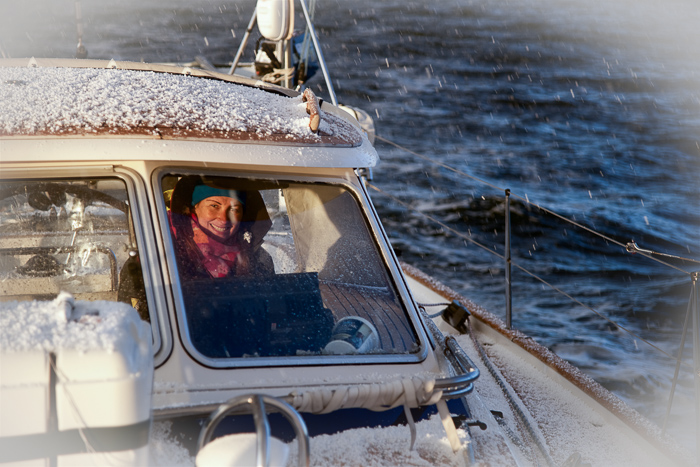
The hardtop gives great comfortable shelter in colder climates and shade in warmer climates.
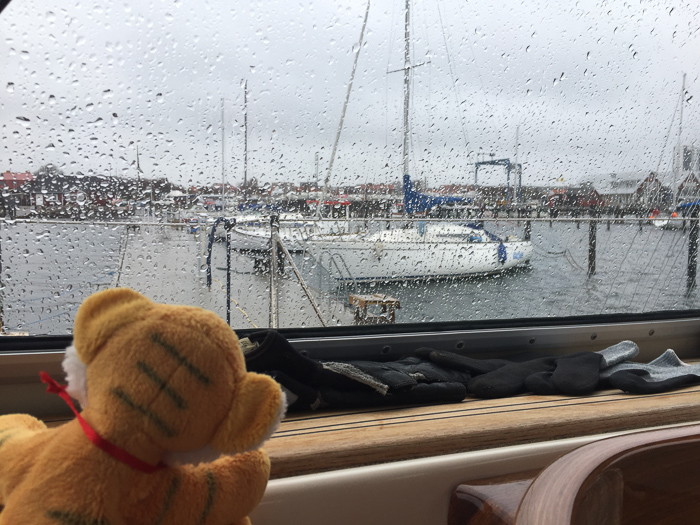
An isolated hull gives the comfort onboard, irrespectively of the outside temperature or weather.
Cabins have their own hatches as well as all-weather-ventilation to allow for fresh air. Fans are installed for the hot days. A bimini gives shade in the cockpit and the hard-top extension gives an extra room in the cockpit during rainy days.
A lot of equipment has been invested to keep the boat silent, the bunks comfortable and the crew happy. Enough water is being produced thanks to a watermaker that makes 150L/hour. Warm water is kept in an extra isolated tank and is quickly heated up by the extra fast 2kW water boiler. Warm water for showers should always be available. Power is provided by a 3-cyl medium-speed 6kW generator that can be boosted to over 9kW working jointly with the 3.5kW inverter onboard.
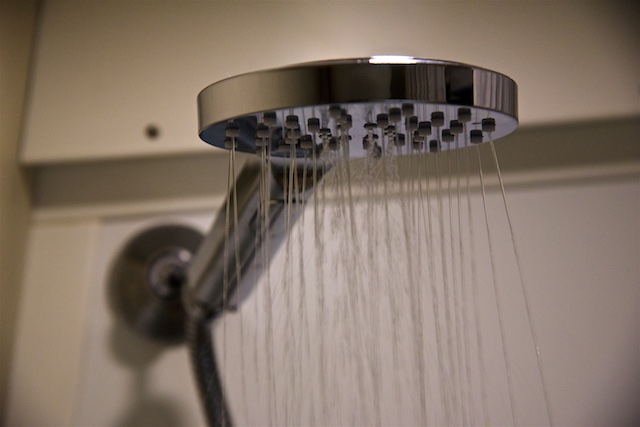
You may take daily showers or use the hair dryer even at anchor or underway. In oder to maximise comfort while showering, Spa-like shower heads have been installed in both bathrooms. Nice smooth hot water is showering down from a large head with many nozzles. By means of a button, the shower type can be changed according to desire.

The forward head is for the guests. Shower compartment to the right in the picture.
Some prefer to shower outside on the aft deck, which gives you ample space and the sea and stars around you as your closest neighbours.
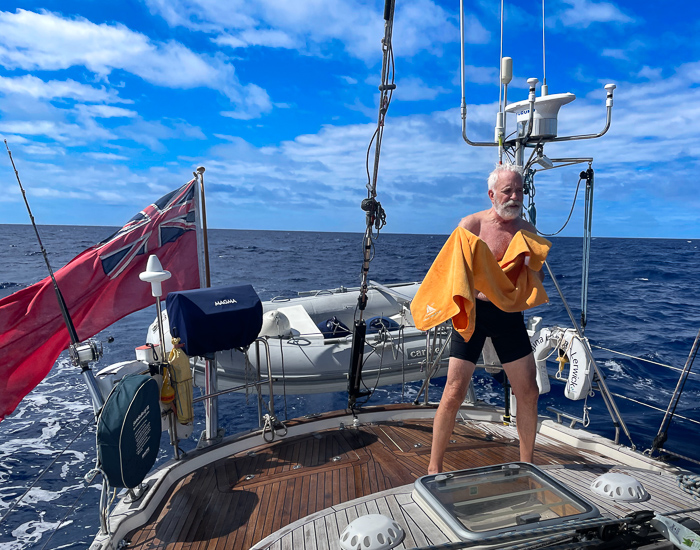
Showering on aft deck on mid-Atlantic somewhere between the Azores and Galicia.
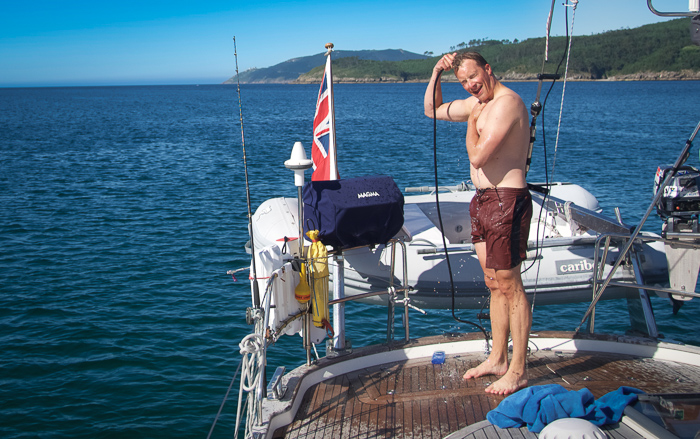
Showering at anchor in Galicia, Spain.
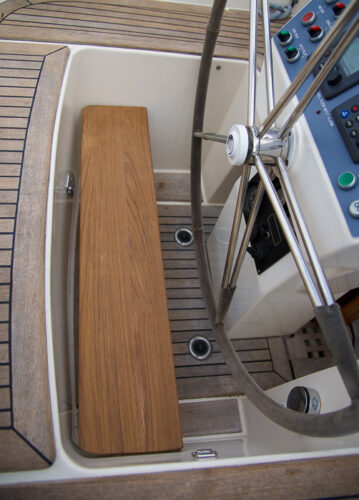
A step is being installed for the shorter crew members so they can comfortably look over the hardtop.
But the real comfort comes from the many small details, ranging from the choice of toilet paper and selected soaps to victualling the best groceries of the highest (Bio-)quality available. Wind-proof blankets are available if you feel cold and the digital cattle heats water to the exact correct temperature (73°C for green tea and 90°C for black tea). The Nespresso machine makes coffee to your liking with choice of types of beans and strength. Or, alternatively, you can enjoy espresso made with the original Italian Bialetti Moka Express. There are comfortable cushions for the cockpit and toppers on top of the already extra thick mattresses in the bunks. The reading lights have USB-chargers for your phone next to your bunk and omnipresent 230V outlets can be used irrespectively if they are fed by shore-power, diesel-generator or via the Lithium batteries and the 3.5 kW inverter.
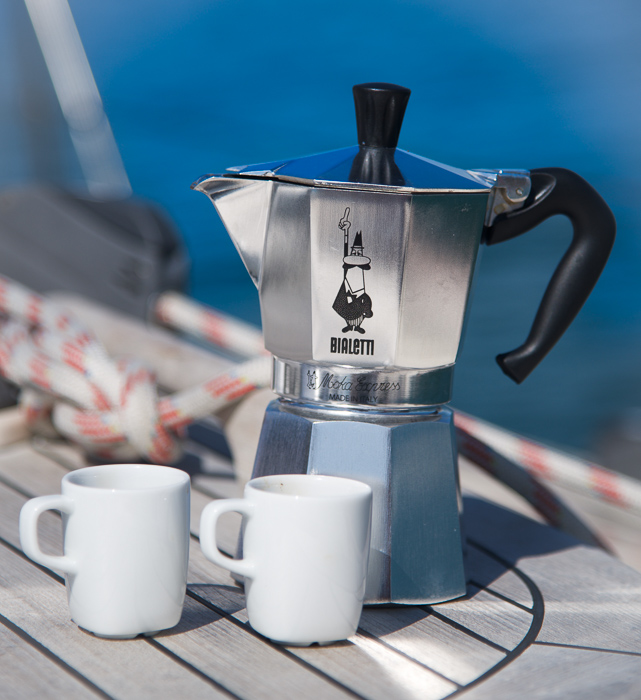
Treat yourself with a true espresso in solitude or with other another early-bird in the mornings.
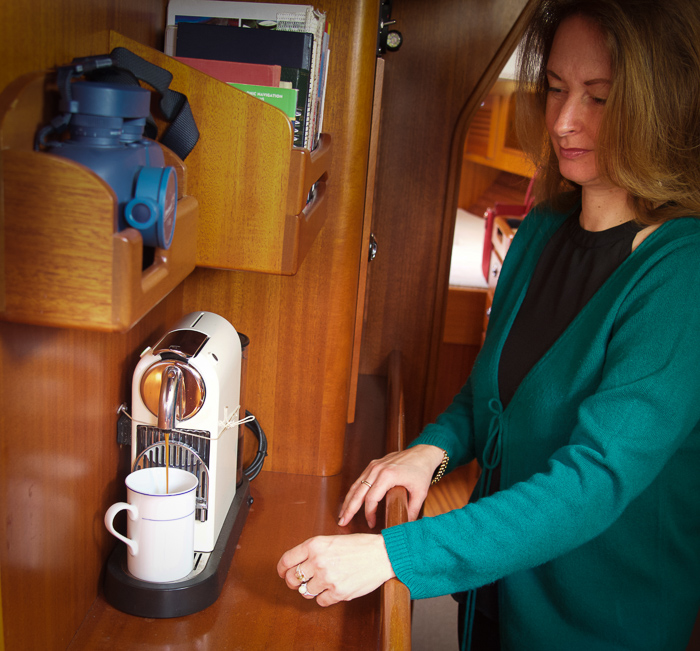
…or get your Nespresso by the press of a button. Of course loaded with original Nespresso capsules and no copies – “Nespresso, what else?!”
The green tea comes from the premises of Gorreana on the Azores which has been purchased on site (and re-ordered online in between the legs to the Azores).

The green tea plantation of Gorreana on Sao George on the Azores is a popular destination for Reginasailing-crew.
Eating and drinking is considered as a very important aspects of cruising and is part of the Regina Laska lifestyle. Hence meals are often jointly prepared wit joy and care, while the high-end Marantz stereo-system with Bose cockpit speakers and ELAC salon speakers provides the music of your choice (bring your iPod and iPhones to share your music!). The onboard entertaining system consists also of a screen and beamer, so we can hold talks or watch movies with fantastic surround sound, either in the salon or in the cockpit depending on the weather.
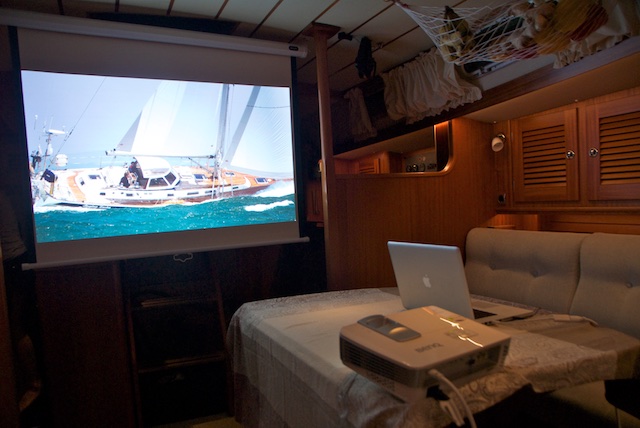
Movie night in the salon.
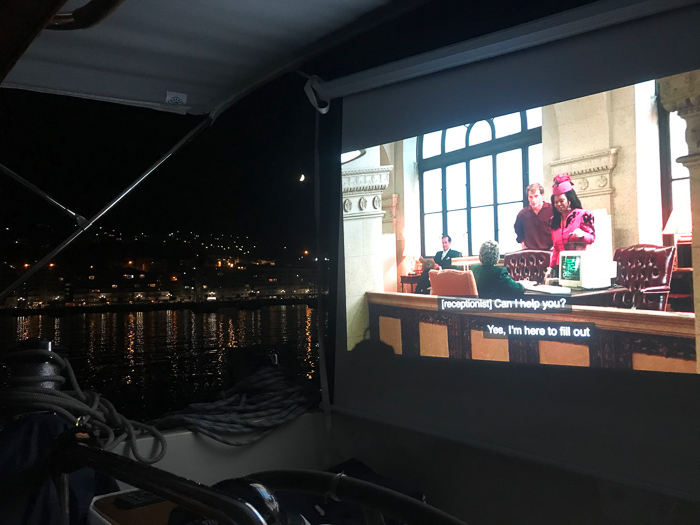
Movie night in the cockpit.
Toilets are electric and fresh-water flushed to avoid smell and to further increase comfort. The toilet seats with large bowels are even strategically placed long-ship (and not perpendicular to the sailing direction). This way, it’s so much more comfortable to sit on the toilet while underway, strategically wedged into place with bulkheads on each side rocking sideways instead of fore-aft! The confined space in the head comes for a reason!
One of the biggest players in enhancing a comfortable atmosphere onboard is the sophisticated lighting system by Båtsystem.
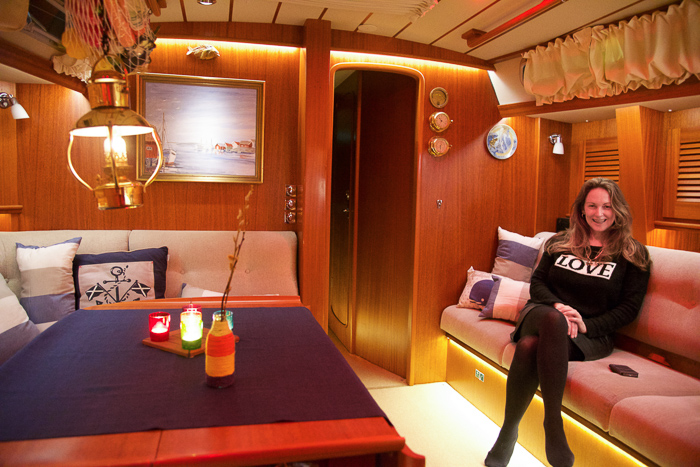
The Båtsystem lighting system enhancing the feeling of comfort.
Sailing in Style
I am personally very fond of sailing in a beautifully maintained boat with classic lines that are a joy for the eye. So many people turn their head and complement this fine timeless design by Germán Frers. Some beauties simply never go out of fashion!
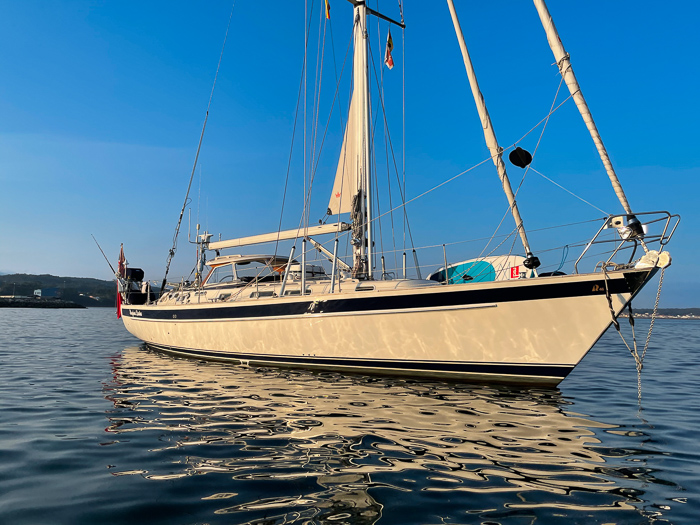
With “style” I mean anything that is a delight for your senes. The eyes enjoy resting their view on beautifully varnished teak and mahogany, the nose loves tipping into a finely crafted Riedel wine glass and the feet love walking on a real solid teak deck. I like polishing my brass and bronze and keep the hull shiny polished.
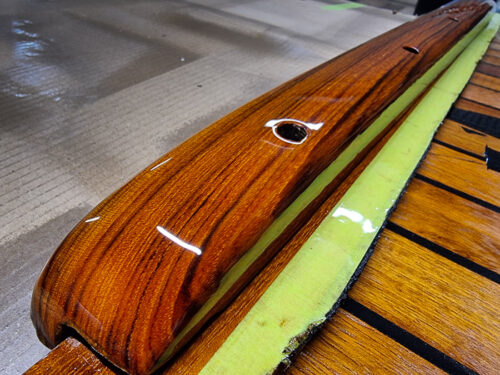
A small detail to give the big picture: Freshly varnished teak handle for the companionway hatch.
Cleanness is also important and that’s why the shower trays are polished for easy cleaning. Obviously there is no smell in the head compartments (due to special gas-tight hoses and fresh-water flushed toilets).
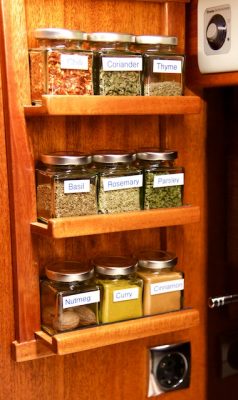
A selection of herbs and spices to prepare tasty food onboard.
Kitchen tools, such as the knives, are of the highest steel quality, there is a toaster, an electric hob, as well as three gas hobs and an oven by one of the most respected marine galley suppliers: GN Espace. Meals are served on elegant Rörstrand china with high class cutlery by WMF and if you fancy fine wines, these are stored in a special wine cellar under the floor boards and served in Riedel wine glasses.
The water is filtered through a Seagull IV sub-micron filter, where not even bacteria can find their way through, offering drinking water with an excellent taste, which is also important to ensure prefect taste of the served tea or coffee, or when watering your single malt whisky with a couple of raindrops of water. A Sodastream provides sparkling water.
If you wish to call home from mid ocean, a satellite phone is provided.
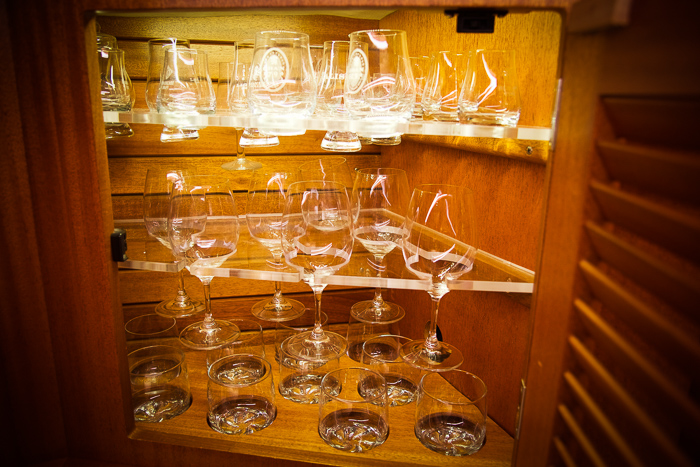
The collection of Riedel wine glasses and whisky dram glasses in the illuminated side cabinet.
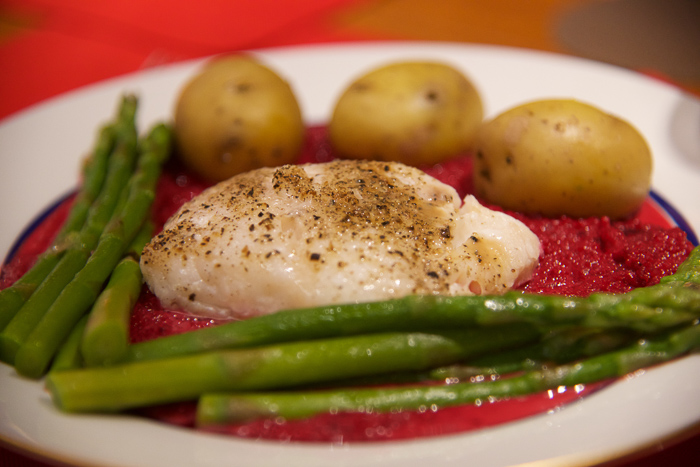
Food is served on Hallberg-Rassy china by Rörstrand, the most respected china manufacturer in Sweden.
A Magma BBQ is placed on aft deck for the warm days at anchor. It’s great when the aft deck is turned into a BBQ party zone!
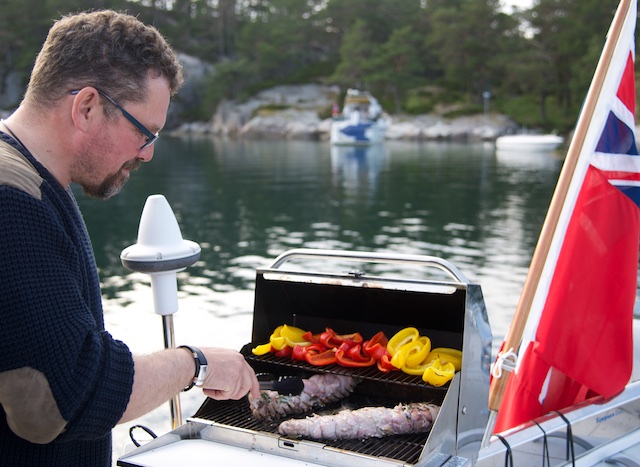
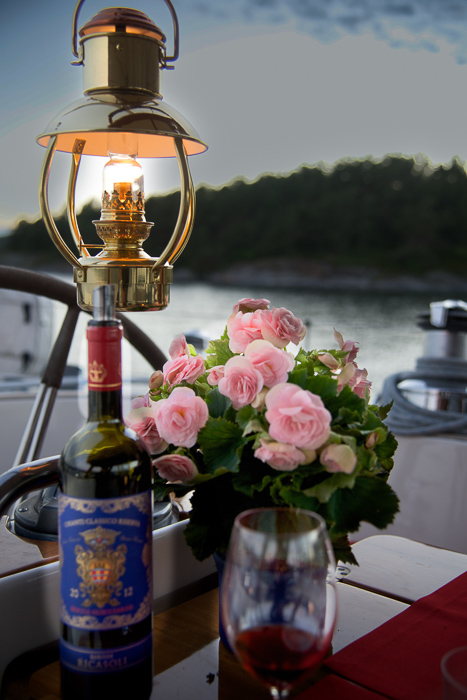
A stylish oil lamp giving the atmosphere. A high-end wine gives the rest.
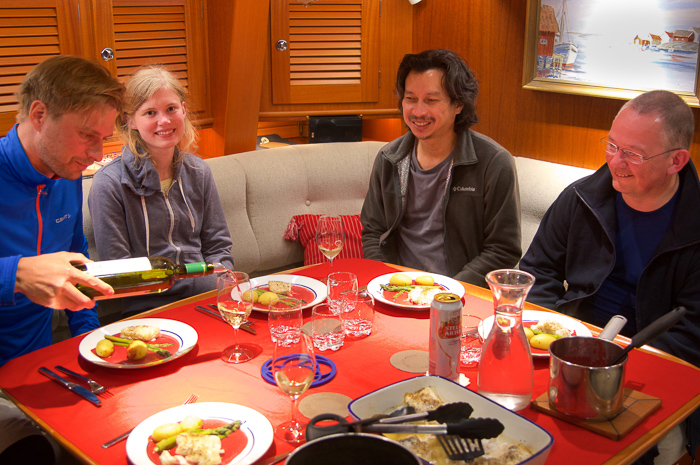
Having said all this, sometimes, even the most stylish dinner onboard has to be replaced by a cozy, stylish or just local simple restaurant ashore. Depending on the desire and requests of the crew and love trying out local food and wine and don’t mind sharing the cost for an evening out.
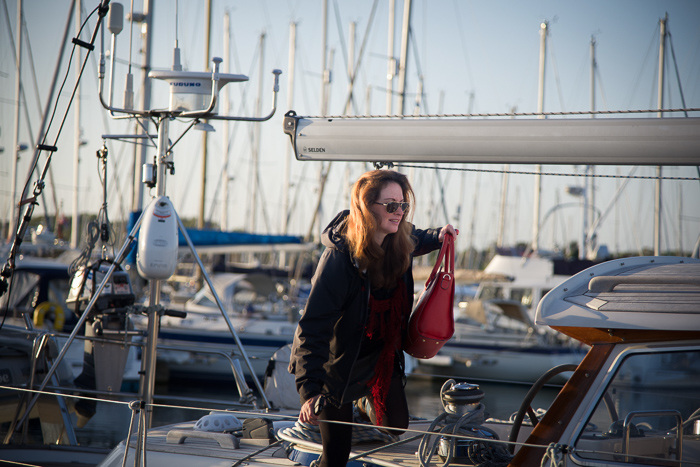
Ready for going out to dinner (here to the Yachtclub in Lymington)
Sailing with Leon
It’s always nice to get to know your instructor and skipper before you join onboard. In order to get to know me better, you can:
- Read my books or articles
- Meet me at the boat shows (e.g. boot Düsseldorf)
- Meet me and the other Family-members at the Reginasailing reunions
(e.g. traditionally on the second Saturday at boot Düsseldorf, contact me if you are interested) - Hear me holding talks at boat shows or yacht clubs
- Check out some videos on sailing on Regina Laska
- Sign up the theory courses before you join onboard (Offshore or Ocean).
Having said all this…. There is nothing like letting previous guests giving their view of their sailing experience, so please read how participants experienced sailing on Regina Laska here.
Sailing Vitae
I have been sailing since I was 15, which also was the year when I bought my first own sailing boat, a Laser dinghy.
With 17 years of age, I join the the beautiful classic 1955 Stockholm-built S&S 62 foot Yawl “Refanut”. As the youngest, I crewed on this beautiful yacht along the east coast of USA for a couple of months (Norfolk/Virginia – Placida near Fort Myers/west coast of Florida).
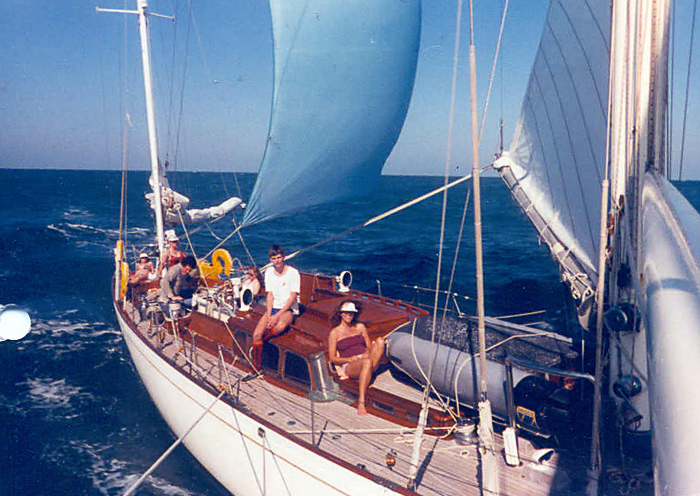
Me sitting on the coachroof of the classic S&S designed yawl Refanut on the east coast of USA in 1981.
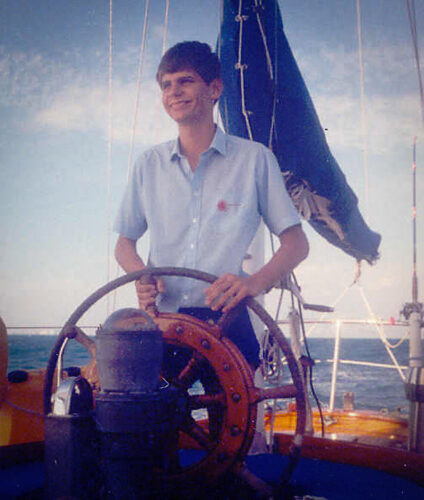
17 years of age onboard Refanut, conquering the world and building a great love for the seas.
With 19 years I bought my own cruising boat, the 21 foot Albin Vega offering no less than 4 berths, a water toilet and a galley…(!) With friends and my sister Jenny, I explored Skagerrak and Kattegat, cruising from southern Norway to Northern Germany with Sweden and Denmark in between.
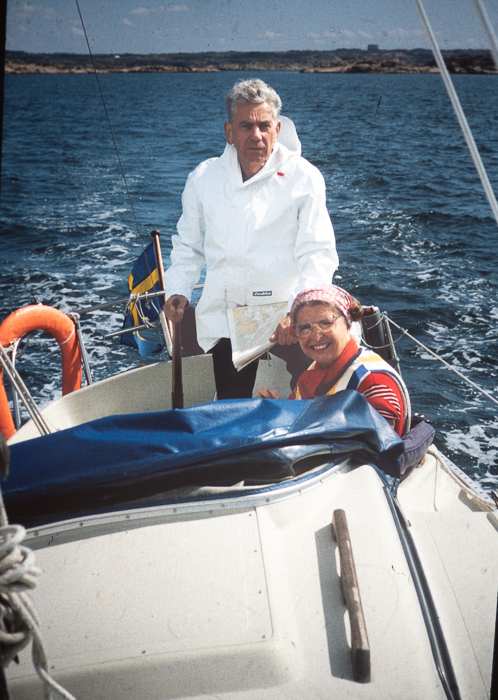
Trying my best to inspire my parents to love sailing in 1996, demonstrating and explaining why I chose to spend all the money I had on a keelboat instead of…? Well, I couldn’t think of anything better, and still can’t! The success of the persuasion act was disputable but the points were set for my life.
Born in Sweden and then brought up in Germany I later studied mechanical engineering at Chalmers in Gothenburg, Sweden, with a Master’s degree after four years in 1988. My first job was as a trainee at ABB with a placement for two years at ABB in Switzerland. Soon enough I moved back to Sweden taking over the marine marketing consultant company of my parents-in-law, which we successfully ran together with my then wife Karolina. The job put me in contact with many of the leading suppliers of marine equipment I still have close contact with. And the financial success from the company was continuously placed in one object only: the ever growing Hallberg-Rassy boats.
Before our daughter Jessica was born, the first Hallberg-Rassy, a HR29, was bought second hand. We owned “Datsy” until our son became 3 years of age and the idea of buying a house became imminent. Before buying the house, we quickly ordered a brand new HR31 since I didn’t believe we would ever buy a new boat once having bought a house. It’s important to set the priorities and do first things first!
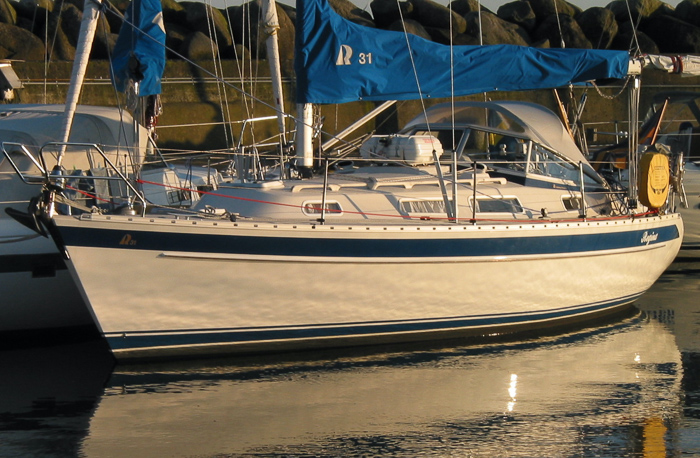
The HR31 “Regina” we got in 1999
During my years in Sweden, I was, amongst others, member of the board of the local wine club “Munskänkarna” where I built my interest for food and wine. The love for culinary experiences in local restaurants and cooking is today being brought onboard Regina Laska.
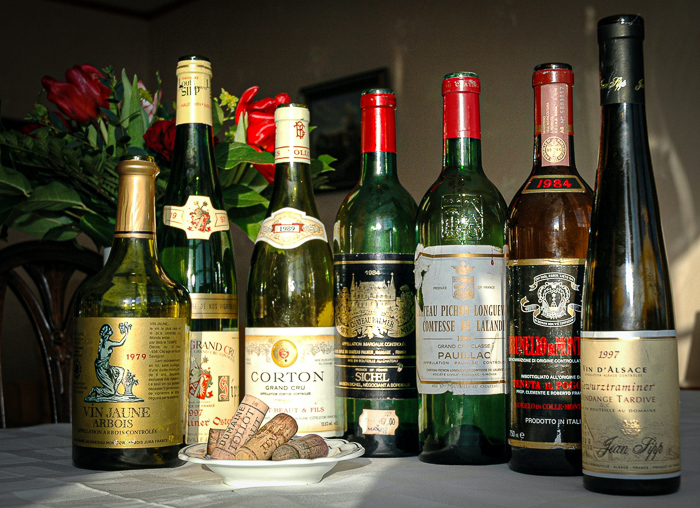
Wines enjoyed during an evening back in our home in Ystad, pre 2005.
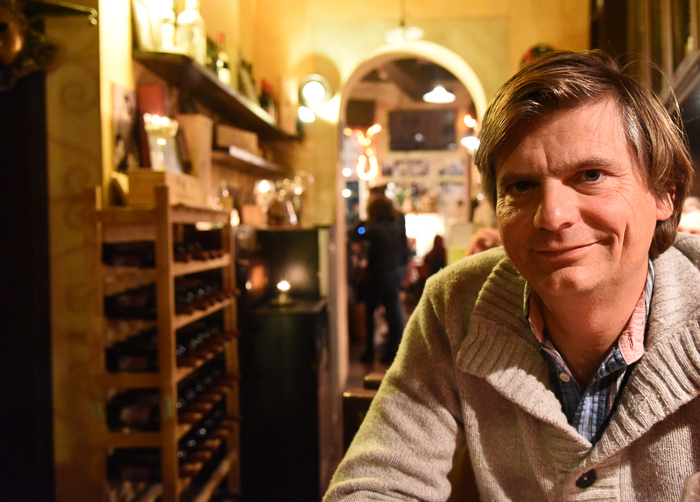
Today, I love going to local authentic pubs and restaurants trying both wine and local fresh food. It’s part of my way of sailing!
After 14 years in Ystad as marine marketing consultants we began to dream about ocean sailing and a sabbatical. So shortly after having turned 40, we ordered a new HR40 and sailed to the Caribbean and back with our children. This lead to the books I wrote about our sabbatical cruise year and the desire to turn my passion into a profession, helping other like-minded sailors to go cruising. The idea of Reginasailing was born.
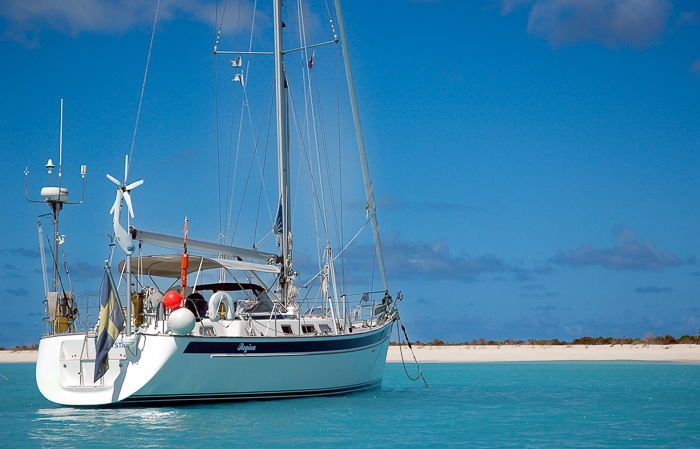
HR40 Regina in Barbuda, Caribbean 2006
In the mean time I became the Managing Editor of an international marine publication in Hamburg while beginning the long path to become a Royal Yachting Association (RYA) Yachtmaster Ocean Instructor and understanding what is needed to turn a boat into a commercial vessel. My background from the professional shipping industry became very useful and so I found and still find a joy and pride to equip my boat to professional safety standards.
From a teaching point of view, I started by becoming the Chief Instructor of Malta Sailing Academy before beginning sail training on my own HR46 “Regina Laska” in 2013.
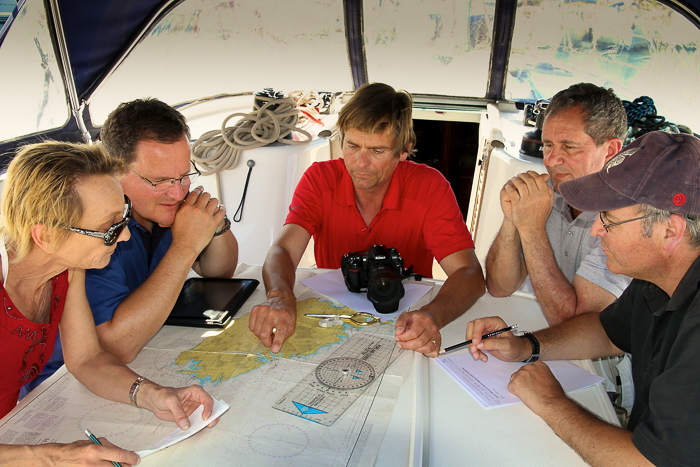
Teaching in Malta before I started my own RYA Training Center. Some of the participants from back then are still today regular guests on Regina Laska, despite them having bought their own boats long ago.
Since then, I have been running two RYA Training Centres, one in Lymington, The Solent, UK for the practical official RYA courses plus another RYA Training Center in Malta for shore-based theory courses.
During the first 7 years of owning Regina Laska (2012-2019), she has been annually refitted by renown Adams Boat Care on Orust in Sweden, specialising on Hallberg-Rassy boats. Since 2019, Regina Laska is being treated by equally professional Marina Coruna in Spain, giving me a perfect start for sailing in all sorts of directions with Galicia as my base.
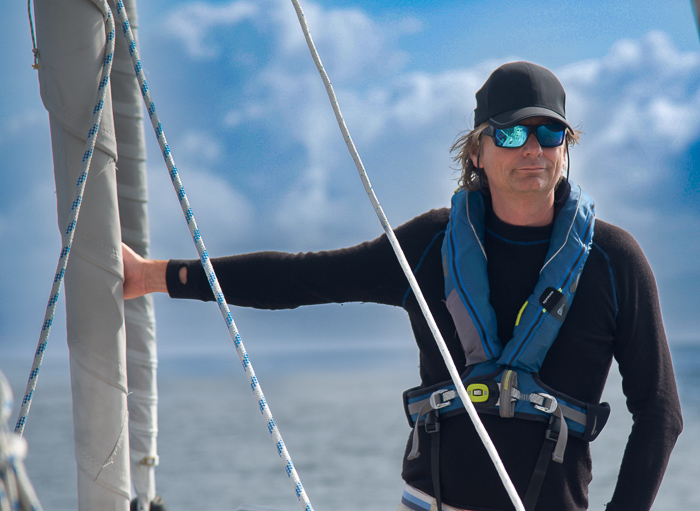
When not performing coastal, offshore and ocean sail training, I love cruising slowly and joyfully with my partner Gaby, with whom I wrote my second book about sailing as a couple (“Zu Zweit an Bord” in German). My latest book I wrote is an how-to instruction book about coastal sailing (“Praxisguide Fahrtensegeln” in German)
During winters, I mainly live in Malta, where I enjoy writing books and articles as well as working as an international sales consultant for Sweden-based marine supplier Båtsystem.
Book your Place
With Reginasailing, you will learn from an experience ocean sailor. It’s less theoretical and very much more practical. And very personal!
Please contact me if you wish to take part.

